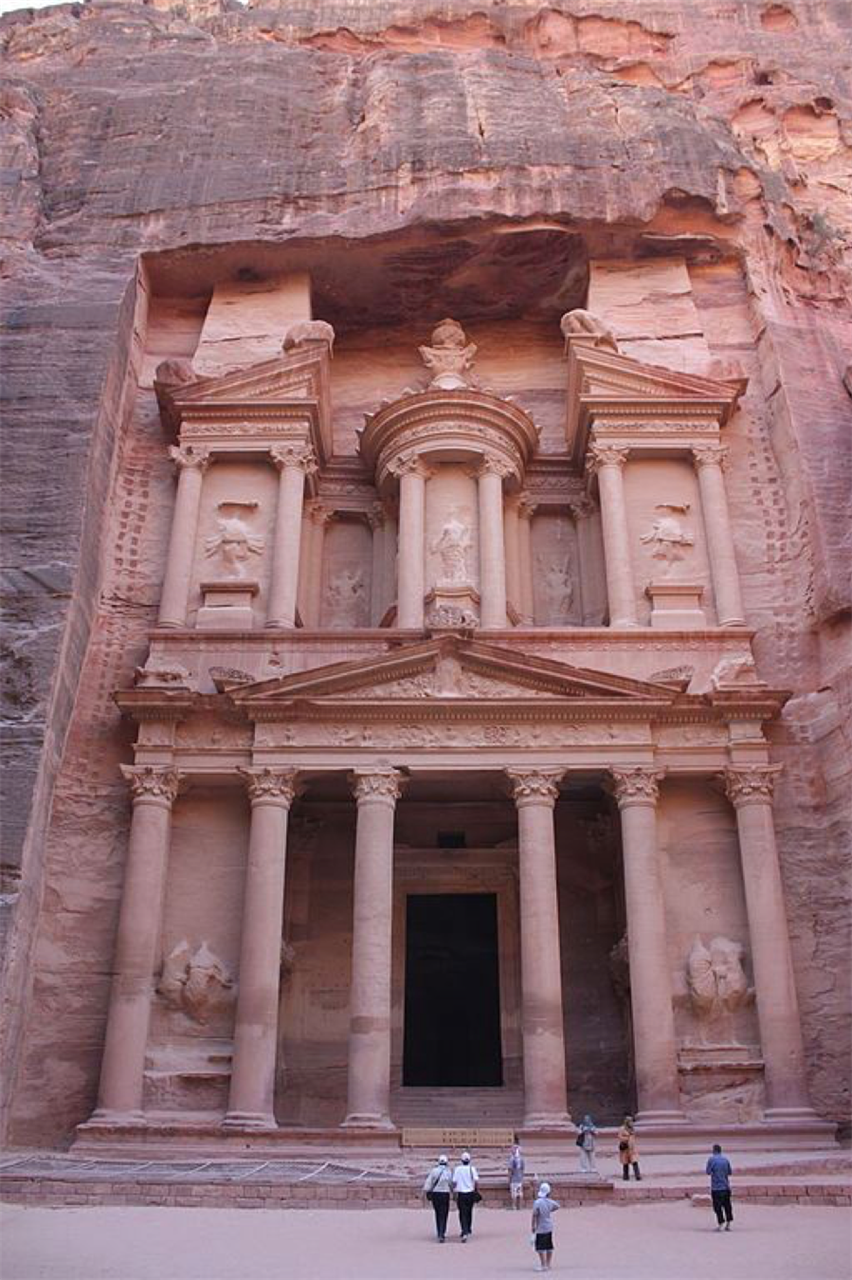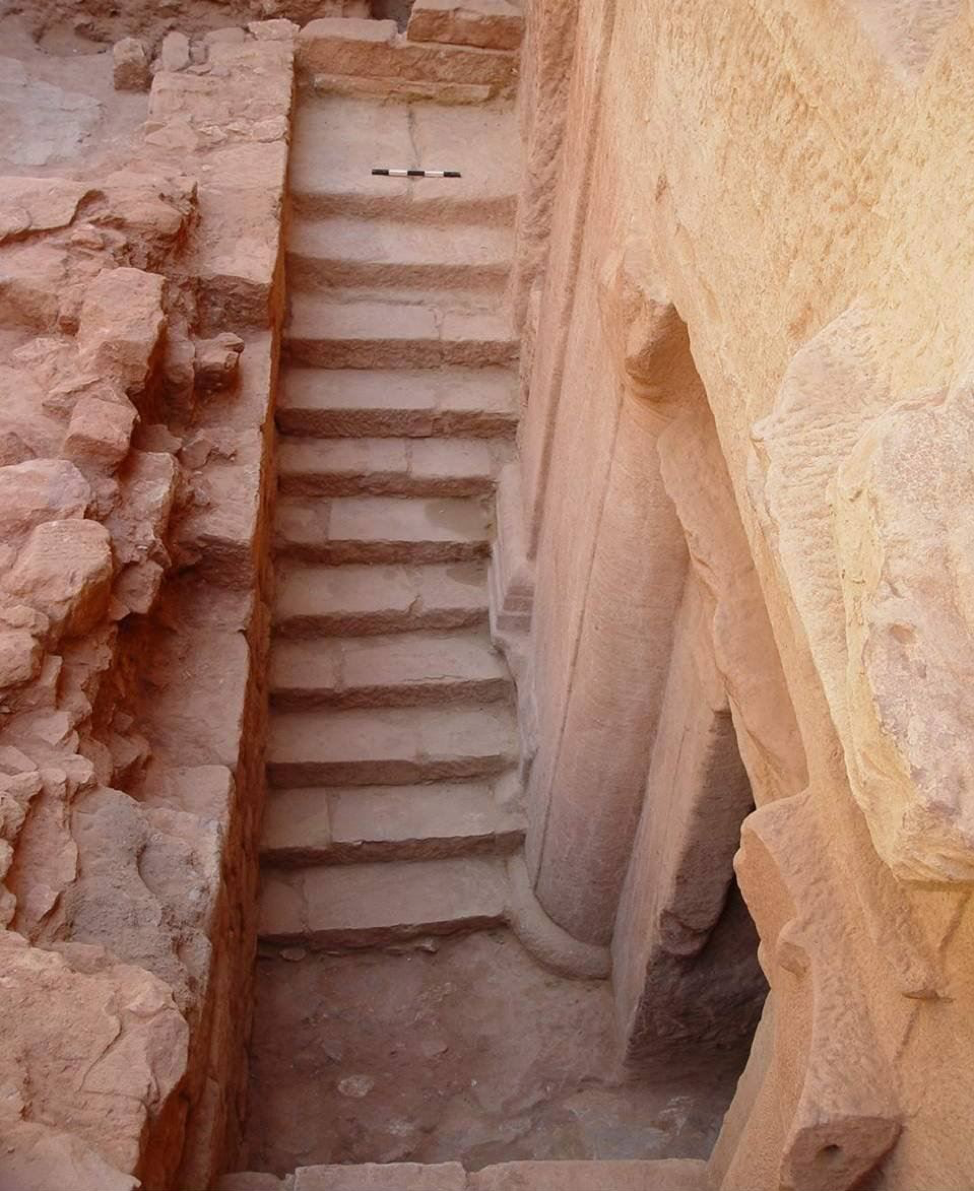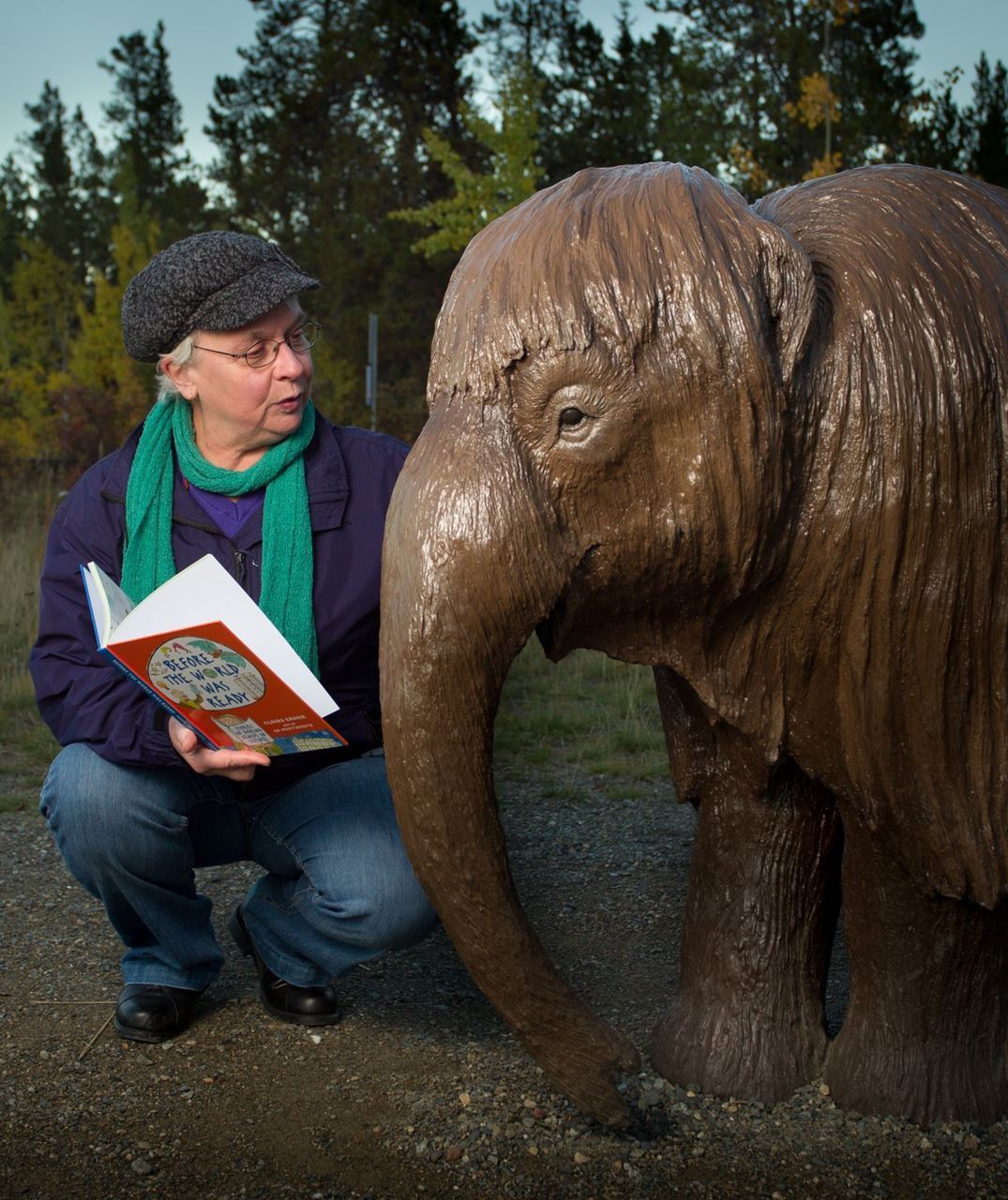This blog post, written by Claire Eamer, was originally posted to our site February 3, 2016. As we gear up for our 2019 Book Awards, we reflect on the previous years of science writing and the rewards and challenges that come with it. Let's call this the SWCC's #ThrowbackThursday!
***

In this 2010 photo of the Treasury, the grating covering the 2003 excavations is visible to the left of the great door. Photo by Arian Zwegers.
I spent much of the summer researching a new kids’ science book. (Sorry – can’t get specific yet.) It’s about a very hot research topic – so hot that fresh stories seemed to hit the news every other day all summer long.
If you’re writing one of those news stories, it’s exciting. You can get your story out in days, if not hours. If you’re writing for a magazine or another long-form medium, you have a problem. Your story might not appear for a couple of months or even longer. That means you have to dig deeper into the background of the story and give your readers the tools to evaluate the hot-off-the-press news stories that will continue to crop up.
But pity the poor book writer! The authors of non-fiction books can spend years researching their topics, reading the literature, interviewing experts in the field, grappling with the complexity and implications of the topic. And that’s just the beginning. The process of editing, designing, proofing, printing, and publishing usually adds at least another year to the process.
I write science books for kids, and that gives me an advantage. The books are shorter, so the turn-around time is faster. Still, the book I’ve been working on since late last spring won’t hit the shelves until next fall. And that’s a long time for a hot topic.
Still – you have to try, even if you’re writing for kids. Maybe especially if you’re writing for kids. They are the scientists and science-consumers of tomorrow, and they need the best, most accurate information writers can give them. Kids’ science writers generally try very hard to provide that.
And sometimes that relatively short lead time for kids’ books works to our advantage.
A few years ago, I spent months researching material for Traitors’ Gate and Other Doorways to the Past, a book for kids aged 10 to 14 on the history of eight different buildings around the world.
(Yes, I know this blog is supposed to be about science, but we’ll get there. Promise!)
One of the doorways was the grand entrance to the Treasury, or Al Khazneh, in Petra, Jordan. You’ve probably seen it. In the movie Indiana Jones and the Last Crusade, when Indy dashed up a wide stone stairway and through the imposing doorway of the Grail Temple, he was really dashing up the steps and through the entrance of the Treasury.
Of course, there’s no Grail Temple on the other side of the door – just a big empty room carved into the red-stone cliff. Both room and façade were created by the Nabateans, who controlled the desert trade routes for several centuries until the Romans took control of Petra in 106 CE.
The Nabateans built the Treasury about 2000 years ago, and the circumstances of its building and its purpose were lost in time. In 2007, when I was researching my book, the best source of information was Jane Taylor’s beautiful 2002 book, Petra and the Lost Kingdom of the Nabateans. The author listed the most common speculations about the purpose of the Treasury, and the reasoning behind them. That should be enough, you’d think. After all, I was writing a single chapter in a book for kids – 20 short pages at most, with lots of pictures.
The trouble is, you have to be sure. So, I searched academic journals, trawled the Internet, and poked through proceedings from archaeology conferences.
(See – I told you we’d get back to science!)
Although the journals produced nothing new, the Internet kept throwing up tantalizing references to recent excavations. But – no journal articles, no first-hand accounts, no contact information.
Finally, I searched for email addresses under the names I’d identified and sent messages to all of the addresses in the hope that one would connect. It did. Dr. Suleiman Farajat of the University of Jordan and the Petra Archaeological Park responded and kindly sent me a draft report with the information I needed.
In the summer of 2003, with tourism in Jordan all but dead because of political tension, Jordanian archaeologists had done some long-delayed excavating in front of the Treasury, where ground-penetrating radar suggested there was something interesting. And indeed there was. The broad steps and huge entry were not, it turned out, the base of the structure. They were, in fact, one storey up. Beneath them, buried in millennia of flash-flood debris, was an entire storey – tombs, some still holding skeletons and the remains of offerings to the dead.

The 2003 excavations revealed this narrow stairway leading down to the tombs that once formed the main-floor level of the Treasury. Photo courtesy of Petra National Trust.
The mystery of the Treasury – still a mystery in the 2002 book – was a mystery no more. The Treasury was a mausoleum built to honour the royal family of Petra and to awe and impress visitors. Its grand entry had once loomed metres above the heads of visitors and worshippers, who filled the plaza beneath it with the smoke of their offerings and the murmur of their prayers.
When Traitors’ Gate and Other Doorways to the Past – a book for kids – came out in 2008, it was the only publication with that new information, apart from a print-only annual report on excavations that was shelved in a library in Jordan. And that remained true for a couple of years, until the rest of the publishing world caught up.
Sometimes, all those awkward timelines just work out right.
Resources
Website of the Petra National Trust and its list of archaeology projects: http://petranationaltrust.org/UI/showcontent.aspx?ContentId=79
A guide to Petra as one of the Seven New Wonders of the World: http://www.theworldwonders.com/new-petra.html
An account by a tourism operator shortly after the 2003 excavations: http://www.diggingsonline.com/pages/rese/arts1/2004/petra.htm
A story about Petra and celebrations for the 200th anniversary of Europeans’ “rediscovery” of the city (the Bedouins knew it was there all the time): http://www.gadventures.com/blog/200-years-of-discovery-petras-re-discovery-bicentennial/
“Preserving Petra Sustainably (One Step at a Time)” in the inaugural edition of the Journal of Eastern Mediterranean Archaeology and Heritage Studies (2013): http://www.psupress.org/Journals/Journal%20PDFs/JEMAHS_mockup_FINAL.pdf
A rather breathless documentary about Petra from the program, Digging for the Truth – but with some good video and an interview with Dr. Farajat: https://www.youtube.com/watch?v=VeKabIpA69A
By Claire Eamer (original post: Feb 3, 2016)

Claire Eamer is a BC-based science writer who writes popular science articles and books for both kids and adults, as well as writing and editing major scientific reports for international science-based organizations.
